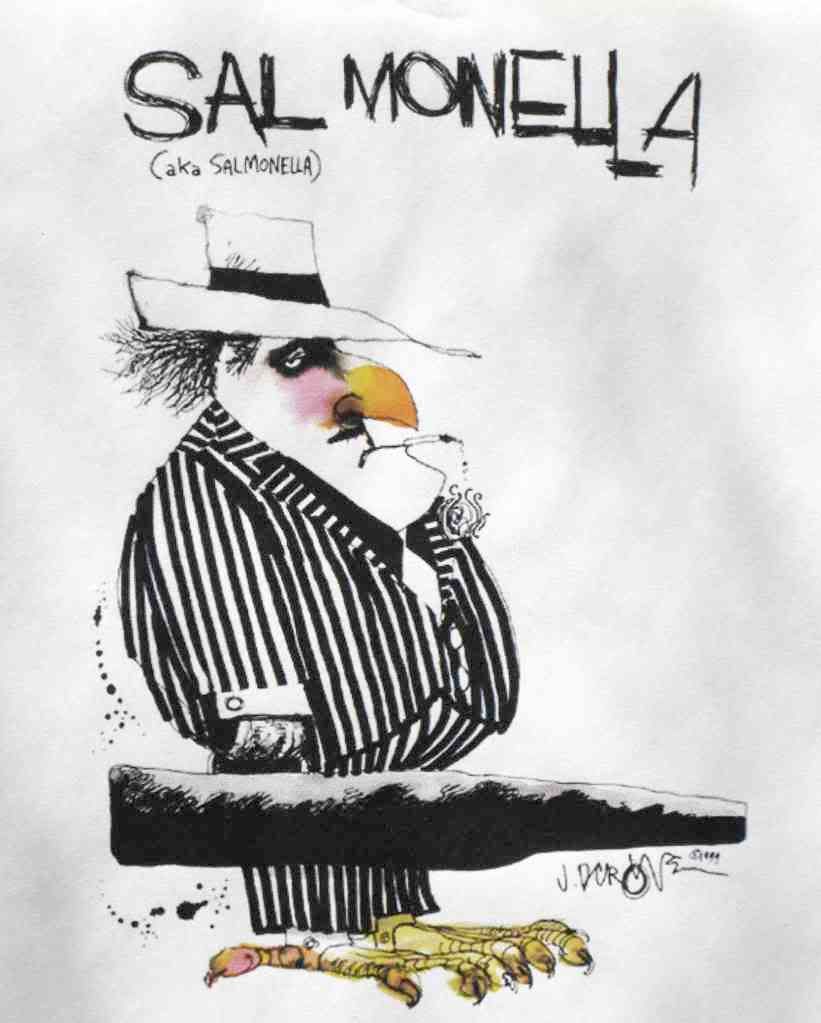 One of my readers recently posted this comment:
One of my readers recently posted this comment:I am curious as to how or if salmonella invades a tomato. If it is only on the surface can it be washed off?A lot of research effort, time, and money has been spent during the last decade in an attempt to answer these questions. Here is what we know.
- Tomatoes can become contaminated in the field, either from irrigation water, from contaminated soil, from infected field animals, from equipment that has not been properly sanitized or from infected field workers. Salmonella can survive in fallow (idle) soil for up to six weeks, which means that the contamination can be transferred between successive crops in the same field if the new crop is planted too soon after harvest.
- The contamination is typically on the surface of the tomato before harvest. Salmonella can stick to the skin of the tomato and even grow there. Whether and how much it grows will depend on the weather during the growing season – temperature and relative humidity.
- Salmonella that is present on the tomatoes when they are harvested may continue to grow during storage. Warm storage temperatures and high relative humidity encourage growth of the microbe.
- Salmonella can penetrate into the body of the tomato through tears or bruises in the skin or through the scar tissue formed when a tomato is detached from its stem. Salmonella may penetrate into the body during washing at the packing house – especially if the tomatoes are warmer than the washing water. Once inside the tomato, the Salmonella cannot be washed away.
- Salmonella that has attached to the skin of the tomato can be partially scrubbed away in running tap water. Dipping the tomatoes in water that contains diluted bleach is a way to kill most – but not necessarily all – of the Salmonella on the surface.
Barak, J.D. and A.S. Liang. 2008. Role of soil, crop debris, and a plant pathogen in Salmonella enterica contamination of tomato plants. PLoS ONE 3(2):e1657 [Full text available on-line].
Guo, X., et al. 2001. Survival of salmonellae on and in tomato plants from the time of inoculation at flowering and early stages of fruit development through fruit ripening. Applied and Environmental Microbiology 67(10):4760–4764 [Full text available on-line].
Ibarra-Sánchez, L.S., et al. 2004. Internalization of bacterial pathogens in tomatoes and their control by selected chemicals. Journal of Food Protection 67(7):1353–1358 [Abstract
available on-line].
Iturriaga, M.H., et al. 2007. Colonization of tomatoes by Salmonella Montevideo is affected
by relative humidity and storage temperature. Journal of Food Protection 70(1):30-34 [Abstract available on-line].
Zhuang, R.-Y., et al. 1995. Fate of Salmonella montevideo on and in raw tomatoes as affected by temperature and treatment with chlorine. Applied and Environmental Microbiology 61(6):2127–2131 [Full text available on-line].





No comments:
Post a Comment
Note: Only a member of this blog may post a comment.